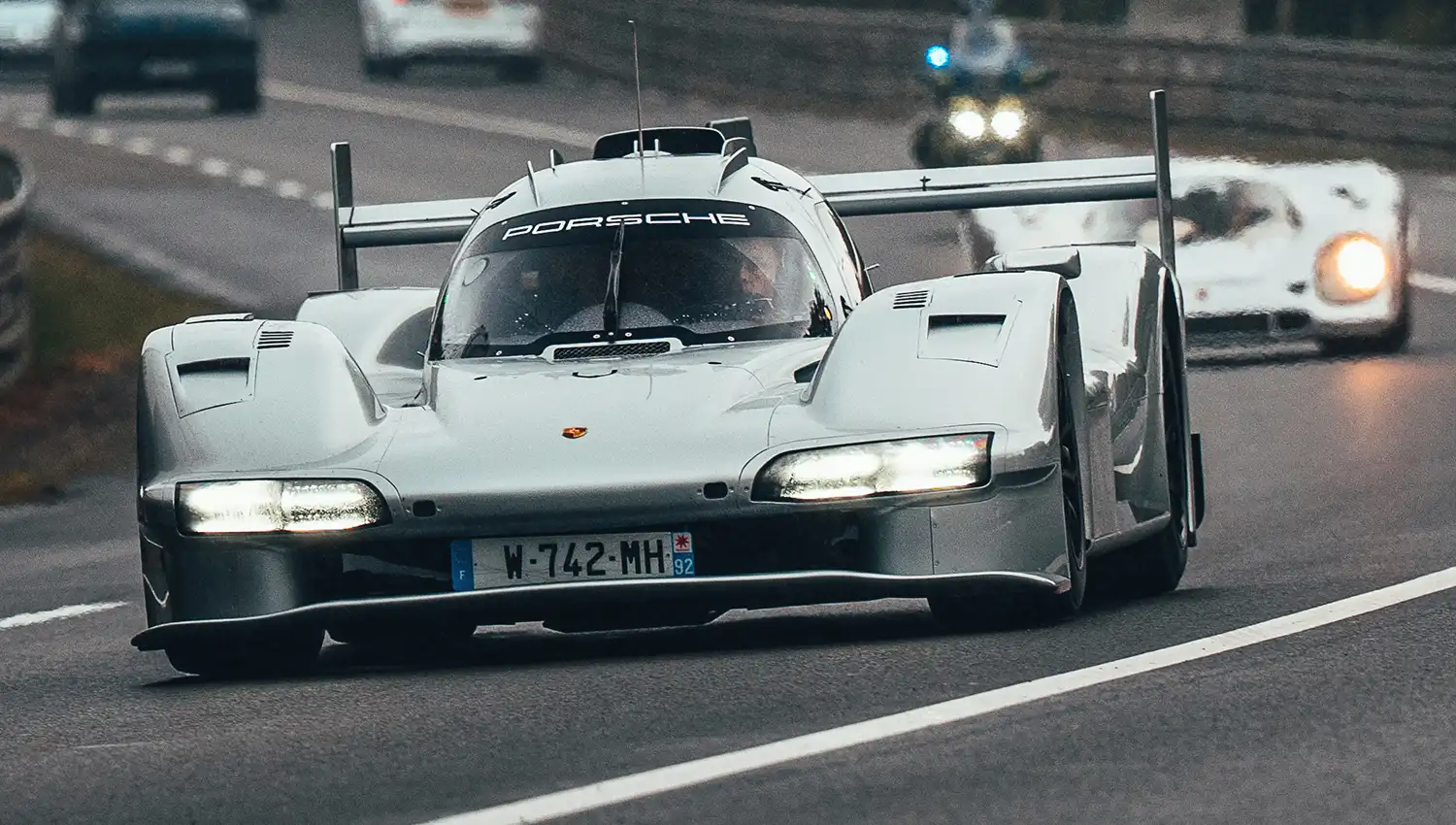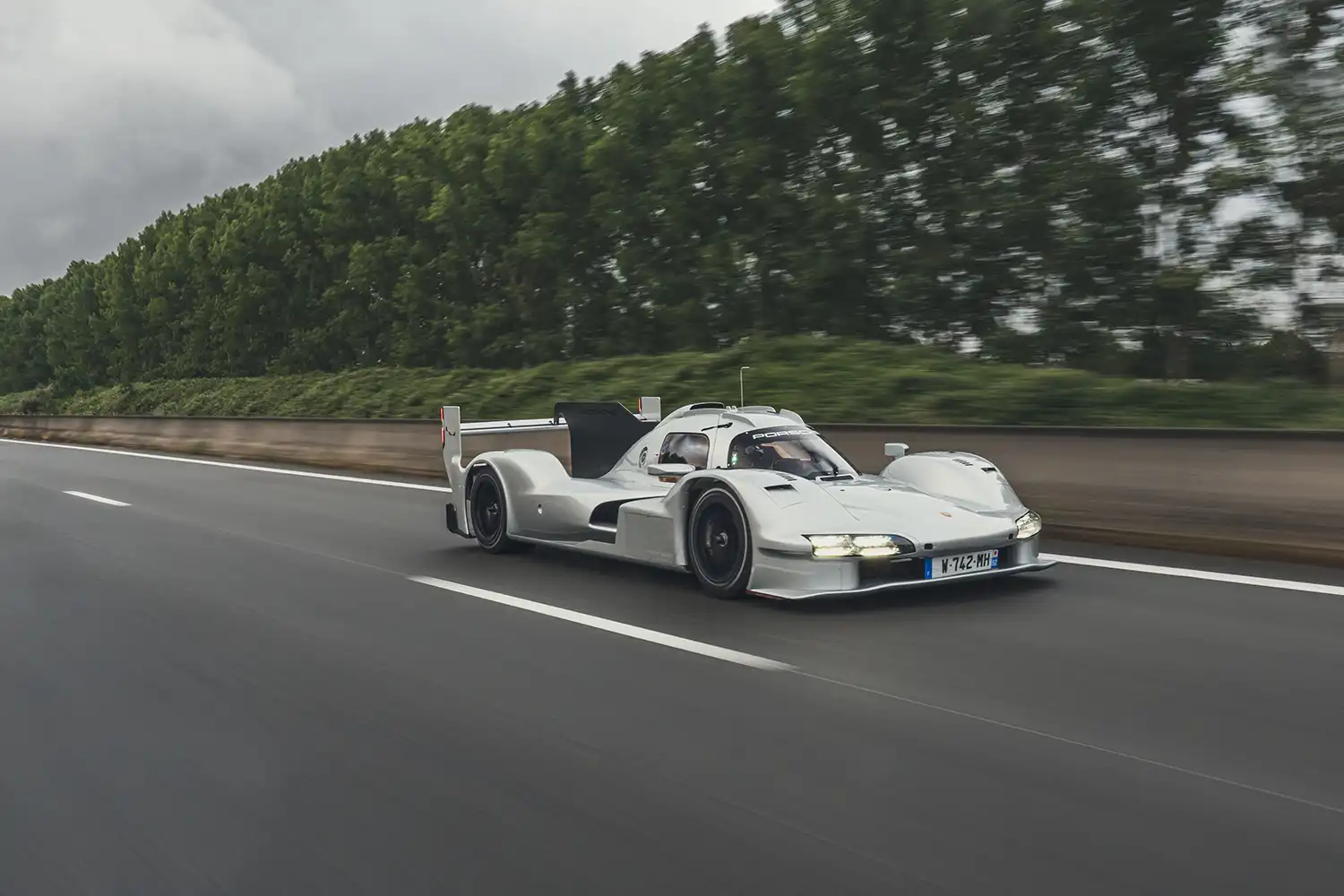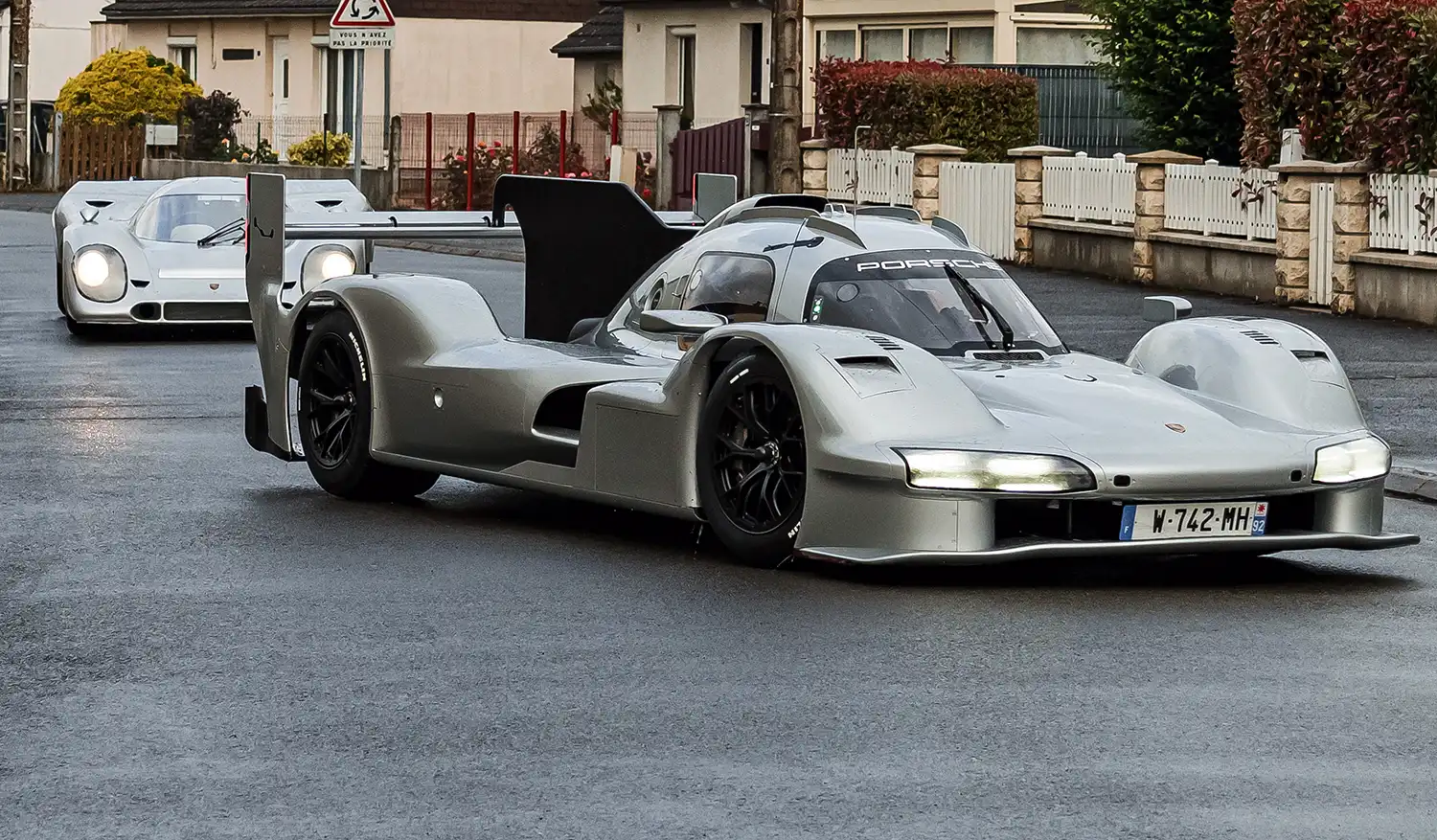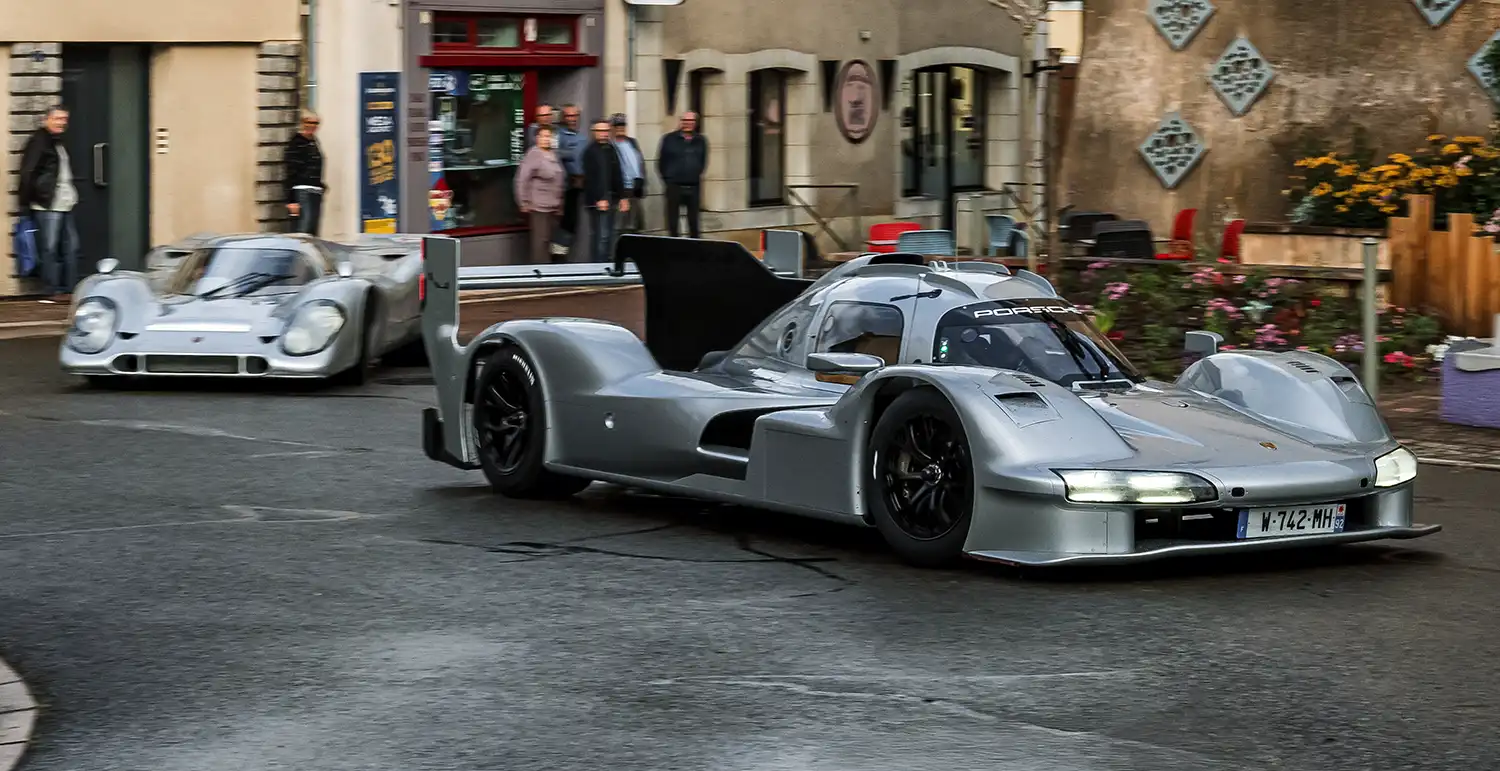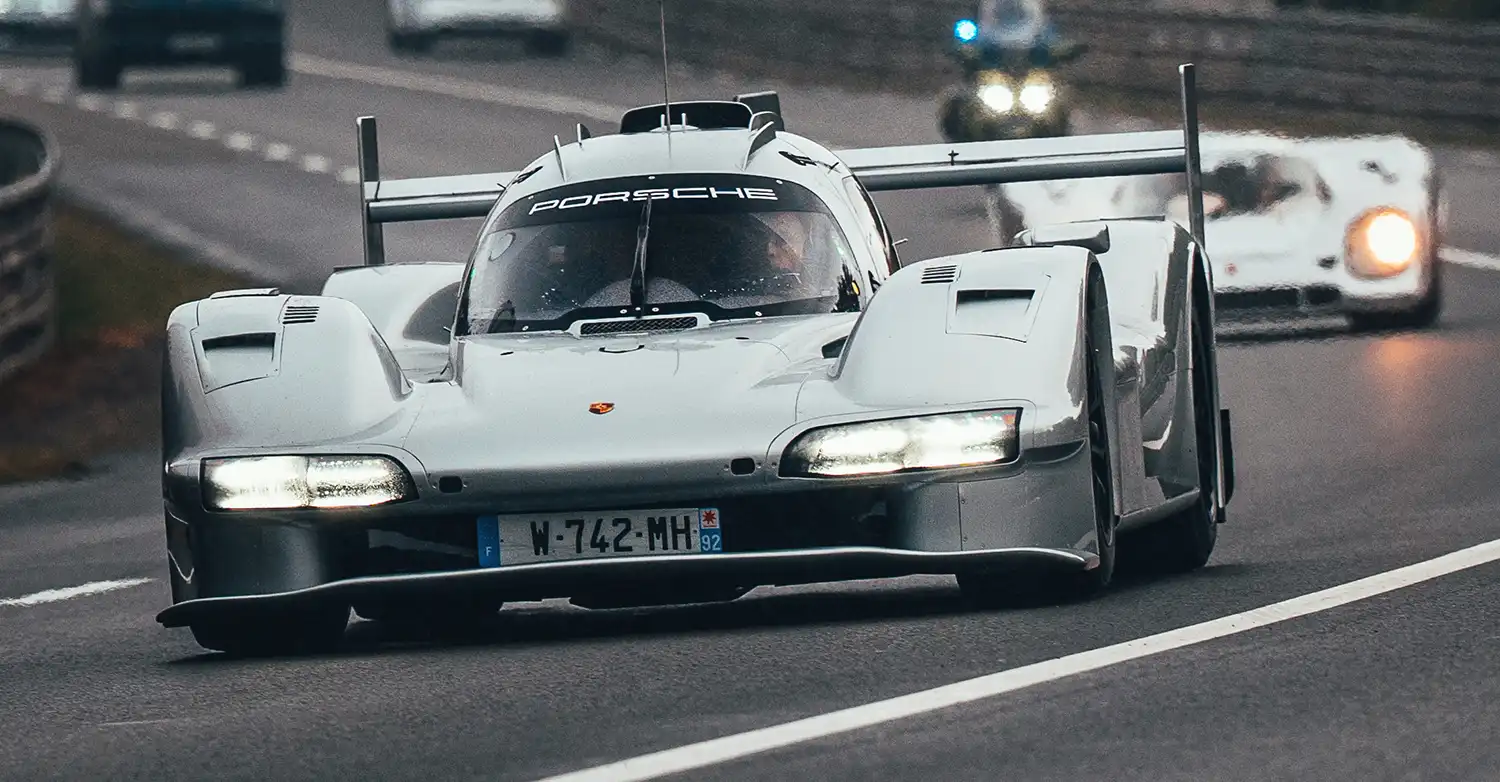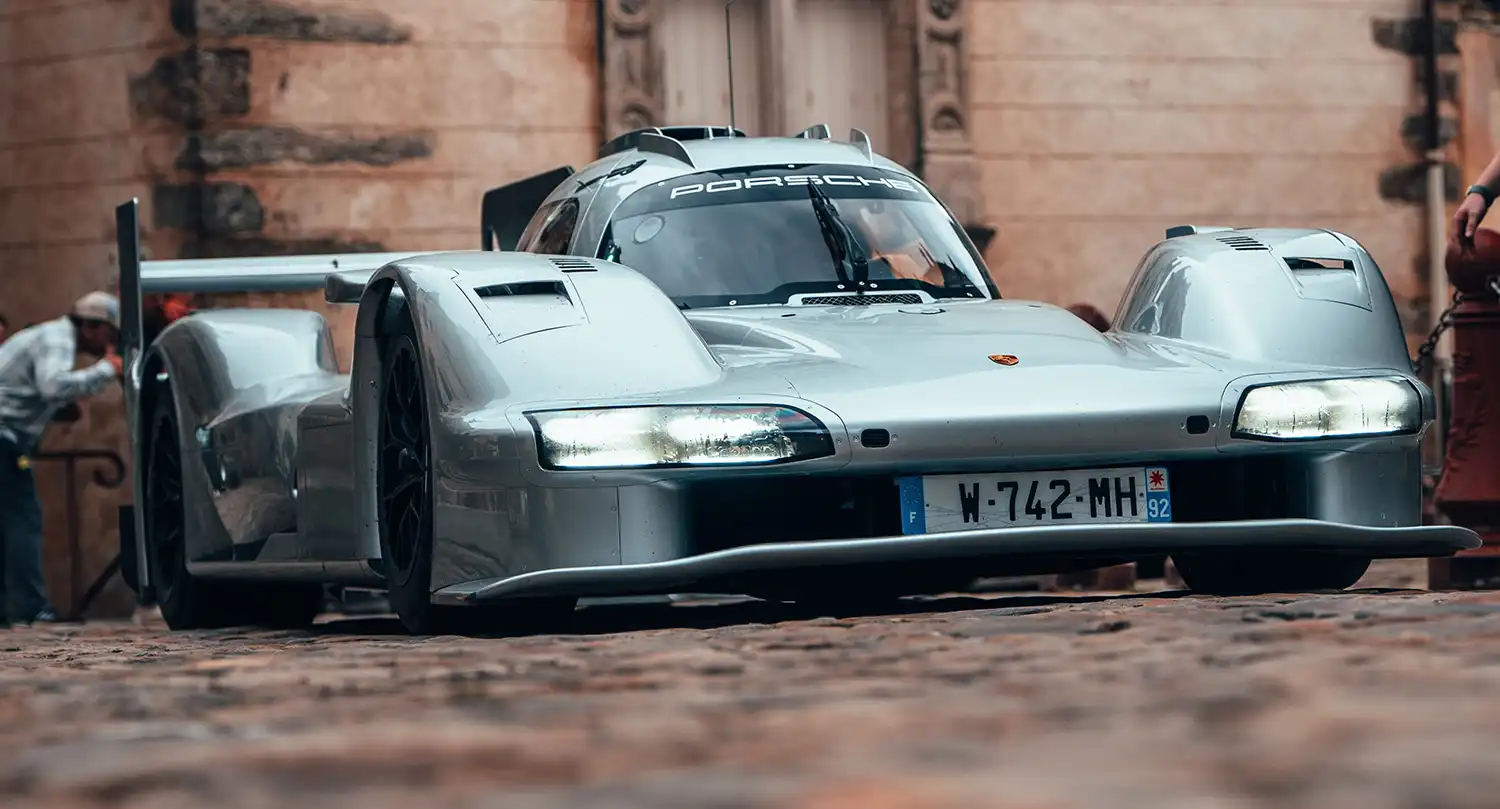
The Porsche 963 RSP One-Off Race Car represents an extraordinary blend of motorsport heritage and bespoke automotive artistry. This unique commission, created for and named after racing legend Roger S. Penske, recently debuted on public roads near Le Mans. It drove alongside the legendary ‘Count Rossi’ 917, the very car that inspired its creation. Three-time Le Mans winner Timo Bernhard was at the wheel, guiding the 963 RSP. This extreme one-off is based on the highly successful 963 racecar. It closely follows the design direction taken by a very special 917 exactly 50 years ago. This machine showcases Porsche’s commitment to innovation. It also highlights their deep respect for their racing legacy.
Conception and Homage
The 963 RSP emerged from a “what if?” concept. It began as a passion project among enthusiasts at Penske and Porsche. They envisioned a 963 version that closely resembled the spirit and appearance of the Count Rossi 917. This project pays homage to the Count Rossi 917 in its 50th anniversary year. That pioneering 917, chassis 30, undertook an extraordinary road journey in April 1975. From the Zuffenhausen factory, it traveled to Paris. Its enigmatic owner insisted on minimal changes. This 917 remains in France, on the road, to this day. The 963 RSP embodies this audacious spirit.

Unique Design and Finish
The 963 RSP features significant changes compared to its racecar counterpart. Unlike competition 963s, which use wraps, the 963 RSP is painted. This presented a unique challenge. Its ultra-thin carbon fiber and Kevlar® bodywork demand precision. In a clear nod to the Count Rossi 917, it is finished in Martini Silver. The car boasts uniquely altered bodywork. A bespoke tan leather and Alcantara interior defines the cabin. These trim choices mirror those made by Count Rossi 50 years ago. Such details emphasize its one-of-one status.
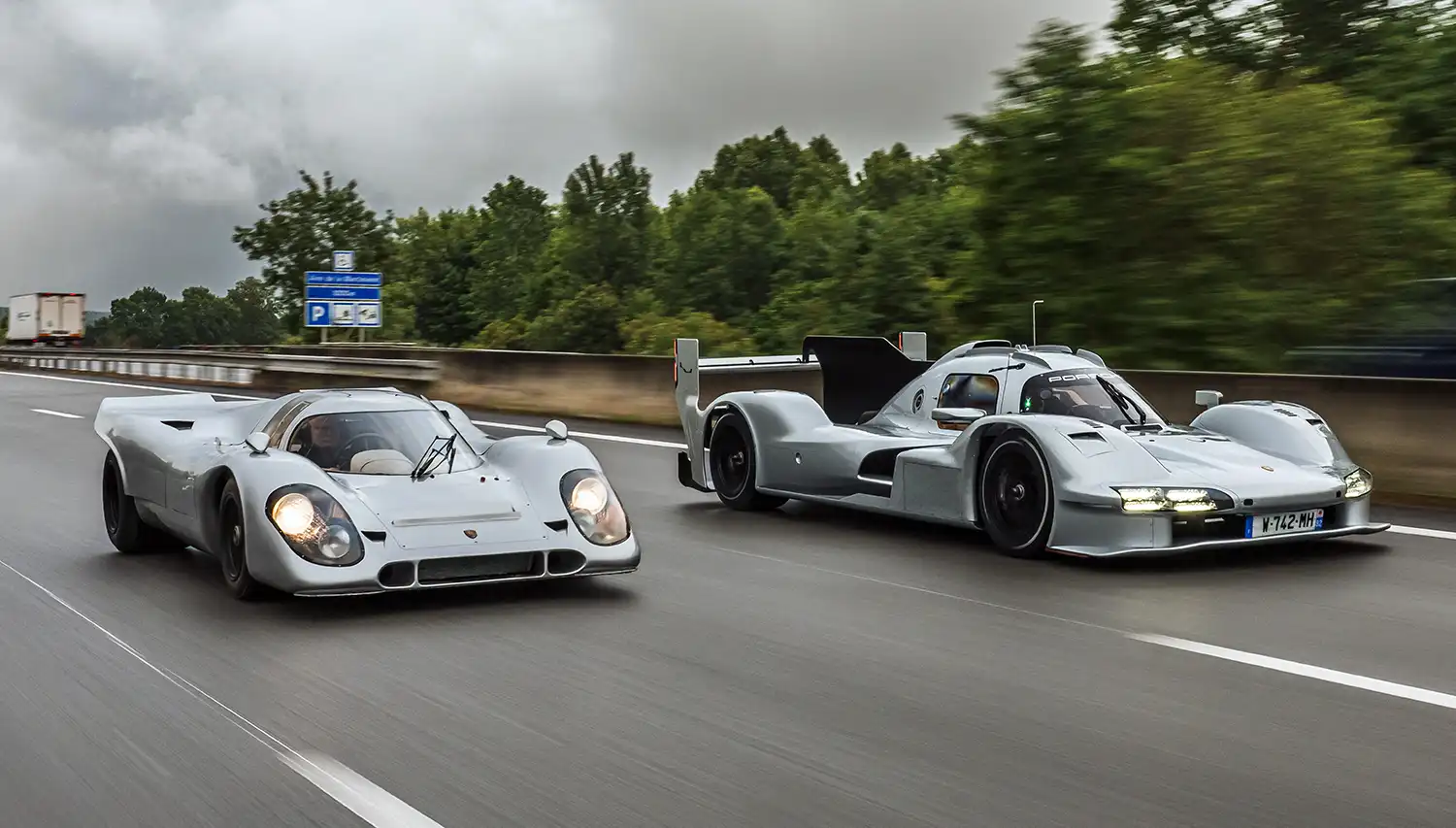
Mechanical Configuration for Road Use
A dedicated mechanical and electronic setup allows the 963 RSP for road use. Its ride height was raised to the maximum available setting. This accommodates driving on public roads. The Multimatic DSSV dampers, designed for racing prototypes, are softened. This provides a more compliant ride. The control unit was reprogrammed for road functionality. Headlights and taillights now operate closer to those of a street car. Modified bodywork covers the wheel arches. Michelin wet weather compound tires ensure grip. The car even features a horn.
These modifications helped the car meet necessary criteria. It gained special permission from French authorities. This allowed it to drive on the road with license plates. The Automobile Club de l’Ouest (ACO) enthusiastically supported this endeavor. Timo Bernhard described the experience as unforgettable. Driving with a 917 beside him felt unreal. The car behaved perfectly, more forgiving than a normal 963. It felt super special and comfortable, even without full safety gear.
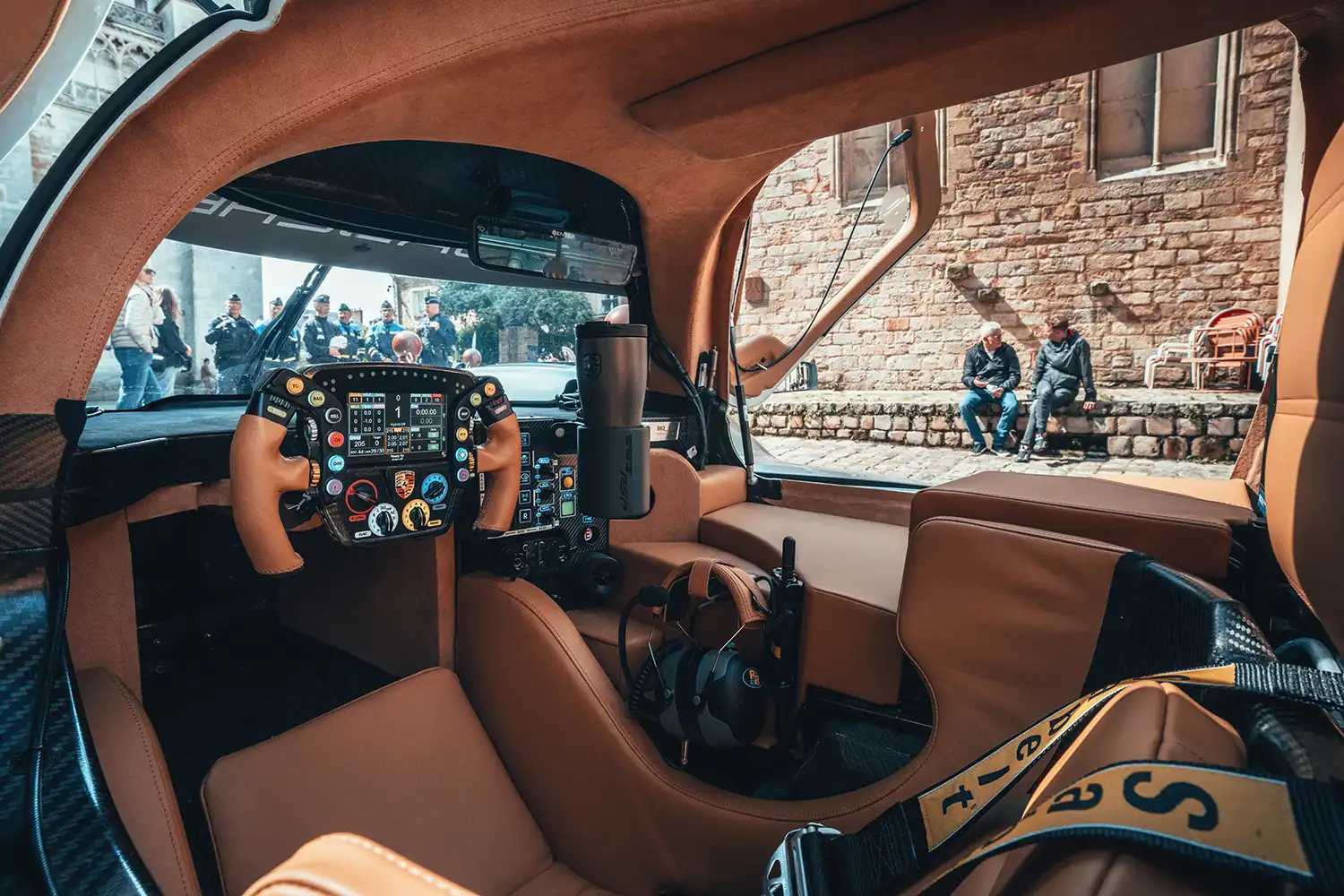
A Partnership of Legends
The creation of the 963 RSP reflects a remarkable partnership. It involved teams from Porsche AG and Porsche Penske Motorsport. Porsche Cars North America also contributed significantly. Motorsport legend Roger Penske’s initials form the car’s name. His deep relationship with Porsche dates back to 1972. Roger Penske noted the 917/30 as one of Team Penske’s greatest eras. It brought numerous wins and championships. Mark Donohue set a closed-course speed record in 1975. This continuing partnership inspired the creation of this exciting car. Penske desired authenticity, with minimal changes from its race origin.
Evolution of the Concept
The 963 RSP concept originated during a trackside meeting. Timo Resch, President and CEO of Porsche Cars North America, conceived the initial idea. He discussed it with Thomas Laudenbach, VP, Porsche Motorsport, and Urs Kuratle, Director Factory Racing LMDh. This occurred at Road Atlanta. Inspired by the original 917 road drive, they imagined repeating the feat with a 963. This small group presented the premise to Roger Penske and Jonathan Diuguid. Both encouraged and further developed the idea. Roger Penske became the nominated customer. The 963 was thus named in his honor.
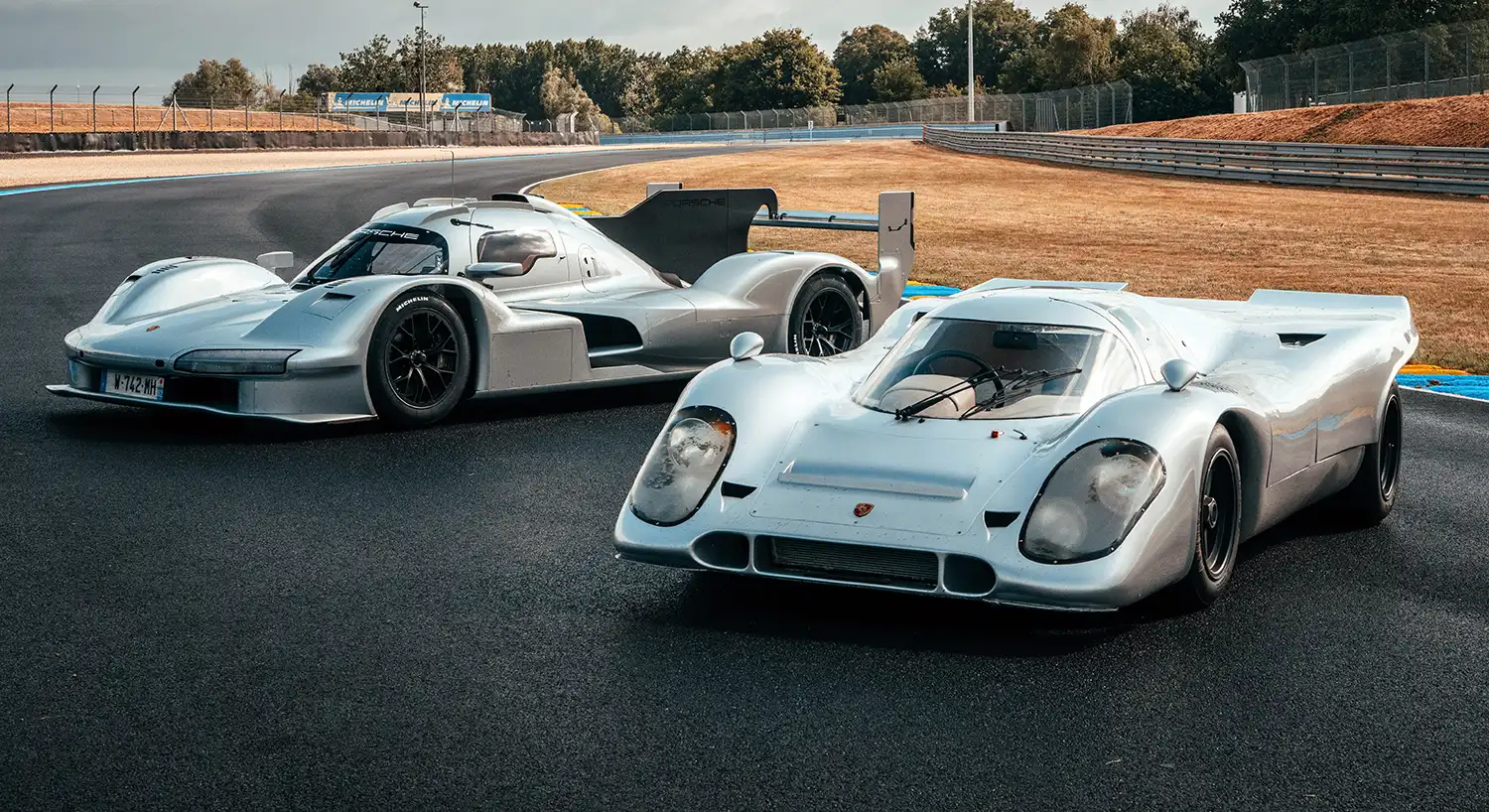
Exterior Design Process
The Sonderwunsch team in Zuffenhausen translated the idea to reality. They cooperated with Sonderwunsch colleagues at Porsche Classic in Atlanta. This standalone facility opened in 2023. Grant Larson, Director of Special Projects at Style Porsche, led the design. His team envisioned a 963 loyal to the 917’s spirit. A silver and black color palette defined the exterior. A tan leather and Alcantara mix was chosen for the interior. The team decided to paint the car. This replicated the 917’s finish. It was a significant challenge due to the body’s Kevlar® and carbon fiber construction.
The ‘Martini Silver’ paint color was verified from Porsche Museum records. A triple-layer lacquer was applied for depth. Minor components, like hinges and wing connectors, received a satin black finish. A unique 3D printed ‘963 RSP’ badge was created. This was applied to the rear of the car. Bodywork changes also aligned the 963 closer to the 917’s form. Unique fender vents were created. These allowed air to escape from within the wheel wells. Carbon fiber blanking plates were removed from the rear wing. An enamel Porsche badge adorned the nose. 1970s-era Michelin logos were added to the tire walls. Rain-spec 18-inch tires were fitted on forged OZ racing wheels. Mounting points for license plates were added. This allowed its public road debut.
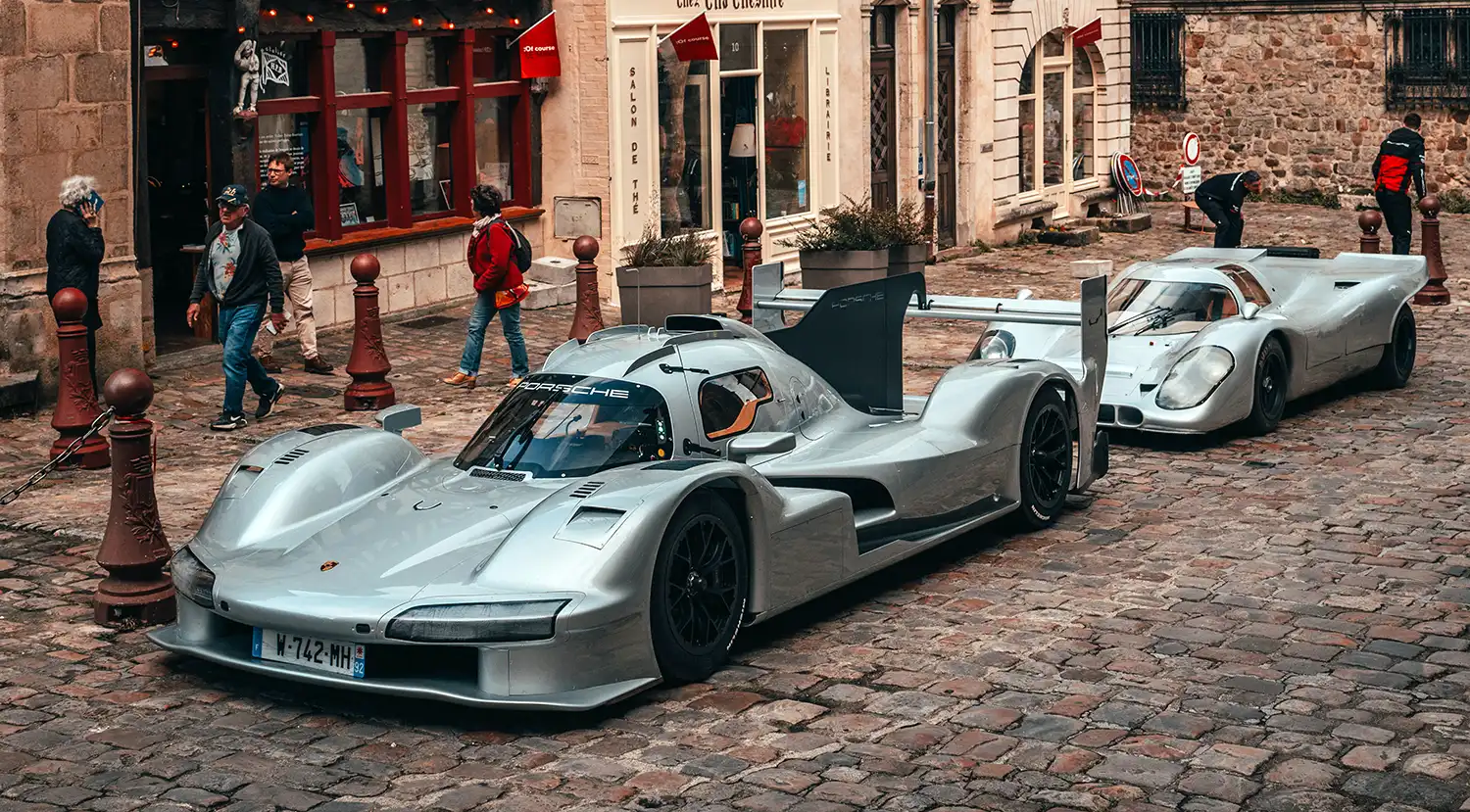
Interior Design Transformation
The interior represents the greatest departure from the standard 963 race car. It follows the handcrafted, bespoke interior of the 917. The 963 RSP features a mix of soft tan leather and Alcantara. While the race car lacks comfort, the RSP is more accommodating. Its single-piece carbon seat is trimmed in leather. Soft cushioning runs down the center. A fixed headrest mounts on the carbon fiber bulkhead. These seats are air-conditioned, like the race version. Leg cushions in the footwell, roof lining, and pillars were retrimmed. Light Alcantara was chosen for these areas. The steering wheel, housing most functions, is leather-finished. A detachable 3D-printed cup holder adds a light-hearted touch. It securely holds a Porsche travel mug.
Next to the driver, a new trimmed panel provides storage. It holds the car’s Peltor headset and steering wheel. A platform for the laptop that starts and operates the car is also present. Roger Penske’s custom carbon crash helmet rests nearby. Subtle design elements honor the 917. Bespoke end plates for the ventilation system mimic the 917’s flat-12 engine fan. The doors are finished in leather and Alcantara. A small alloy plaque notes the chassis number. It also states the construction date and location.

Hybrid Powertrain and Performance
The 963 RSP features a powerful hybrid V8 powertrain. This system includes a lithium-ion battery. It can operate on electrical power alone. The powertrain remains in standard race tune. However, power delivery from the MGU was remapped. This provides smoother delivery, more appropriate for road use. It was also re-mapped to run on pump gas. This was a significant undertaking for the team. The standard 963 is powered by a 4.6-liter twin-turbocharged V8. This engine makes approximately 680 hp. Its origins trace back to the RS Spyder race program. This program achieved success from 2006 to 2008.
The engine, originally 3.4 liters, was enlarged to 4.6. It powered the limited-production 918 Spyder road car. That car debuted in 2013. The flat crankshaft and short stroke allow low mounting. This optimizes the car’s center of gravity. While the 918 Spyder used a naturally aspirated engine, the 963 pairs it with two turbochargers. Van der Lee, a Dutch manufacturer, supplies these. The turbochargers generate moderate boost pressure. They mount on the hot side of the engine. This placement optimizes throttle response. Around 80 percent of the 963’s engine components are shared. These parts originate from the 918 Spyder. The 918 was already designed to integrate with a hybrid system.
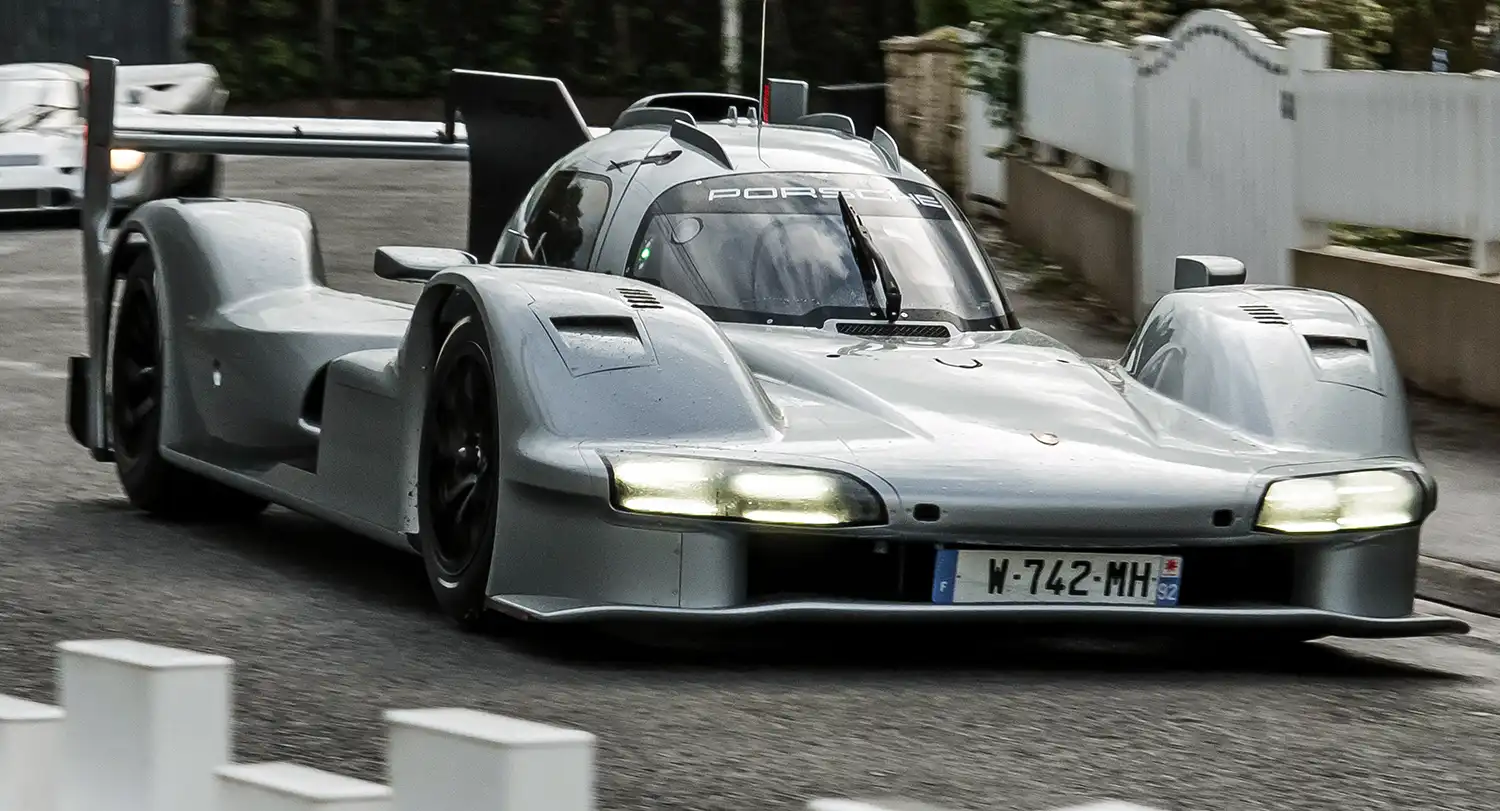
Standardized components complete the electric boost system. Bosch supplies the motor generator unit, electronics, and software. Williams Advanced Engineering provides the high-voltage battery. The MGU handles power output and recuperation. It operates at the rear axle. This unit interacts directly with the sequential seven-speed gearbox from Xtrac. The MGU is positioned in the bell housing. It sits between the combustion engine and the gearbox. The hybrid’s entire electrical system produces up to 800 volts. The uniform battery offers 1.35 kWh of energy capacity. This energy can be mobilized instantly under acceleration. An output of 30 to 50 kW is available in short bursts. This does not alter the powertrain’s total output. When MGU thrust activates, combustion engine power decreases. This happens automatically. The combustion engine can reach over 8,000 rpm.
Finishing Touches and Future Display
Accompanying the 963 RSP are bespoke accessories. A custom-fitted carbon crash helmet matches the car’s Martini Silver accents. A bespoke Snap On toolset also features matching colors. Its chest bears a commemorative plaque. The plaque honors the project and its namesake. Tool chest handles are wrapped in the same leather as the interior. Drawers feature custom foam inserts. These carry tools and special operational equipment.
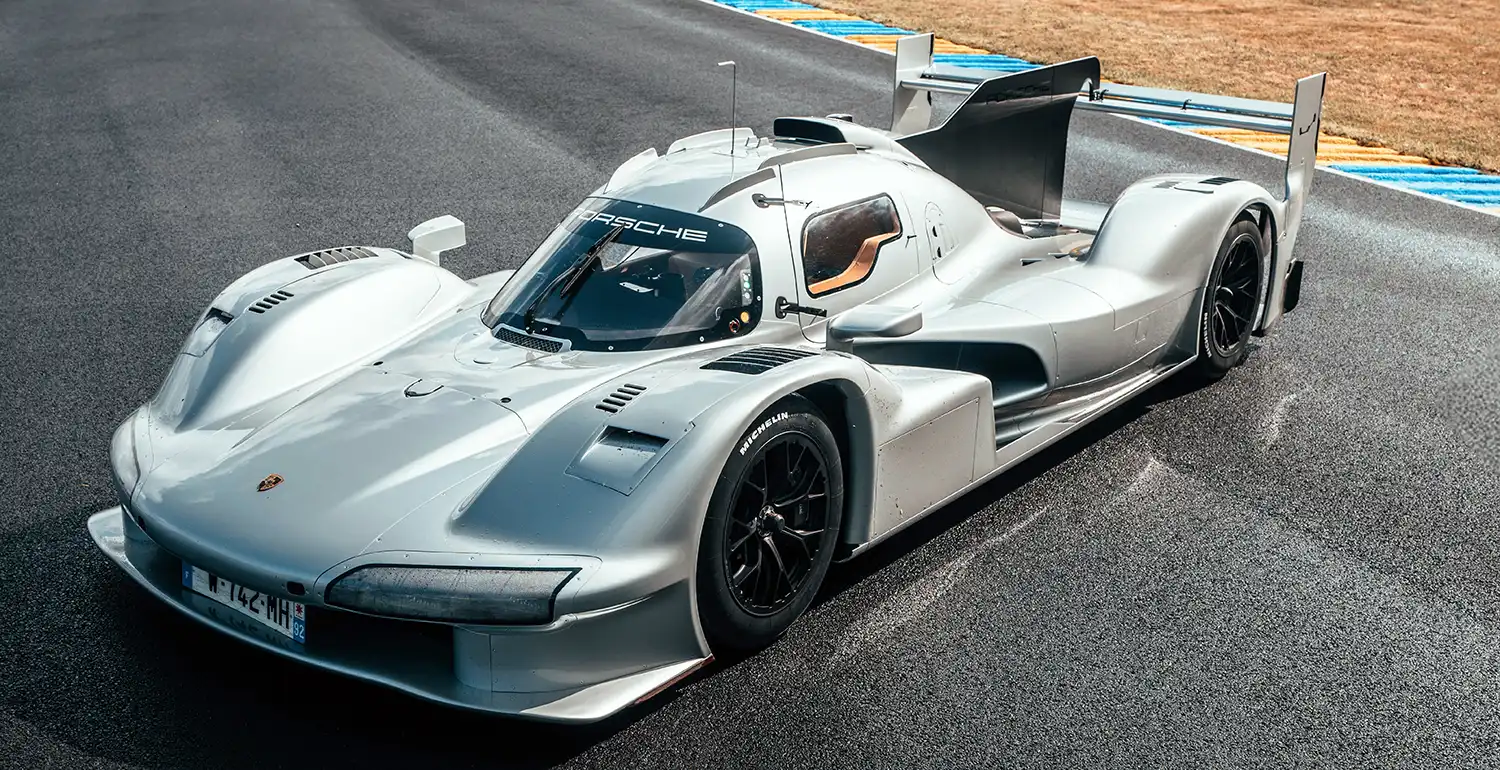
While capable of road use under special circumstances, the 963 RSP is unique. It met criteria for French ‘W’ license plates for its debut. However, it is not a homologated production model. It remains a very special one-off creation. The 963 RSP will go on public display. This will occur at the Circuit de la Sarthe during the 24 Hours of Le Mans. Afterwards, it will return to Stuttgart. There, it will be shown at the Porsche Museum. In July, the car will appear at the Goodwood Festival of Speed. It will be showcased alongside its inspiration, the 917.
Summary
The Porsche 963 RSP is a unique, one-off race car commissioned for Roger S. Penske, debuting near Le Mans. Inspired by the 917, this extreme machine features a powerful twin-turbo V8, bespoke Martini Silver paint, unique bodywork, and a custom tan leather interior. Modified for road use, it showcases Porsche’s engineering prowess and deep heritage.

Disclaimer: Vehicle specifications and features can vary. Always consult official manufacturer documentation for the most accurate and current information.
Source: Porsche
AI Assistance: Gemini
